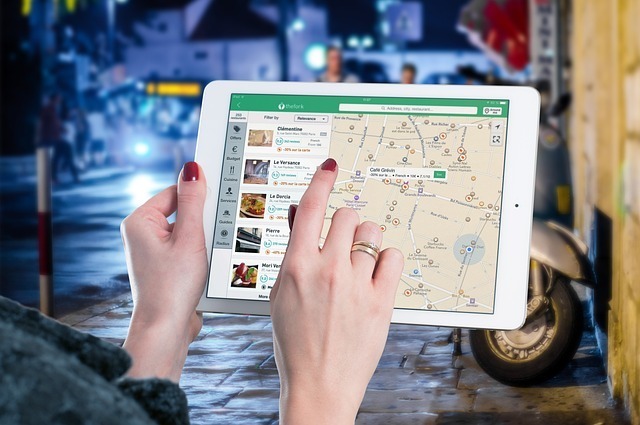When it comes to navigating new destinations, the choice between digital vs. paper tourist maps can significantly impact your travel experience. Both formats offer distinct advantages and cater to different preferences and needs. Whether you’re a tech-savvy traveler who relies on apps and GPS or a traditional explorer who prefers the tactile feel of a printed map, understanding the strengths and limitations of each option will help you make an informed decision. This article explores the benefits and drawbacks of digital and paper tourist maps, providing you with the insights needed to choose the right map for your next adventure.
1. Advantages of Digital Tourist Maps
Digital tourist maps have revolutionized the way we navigate and explore new places. They offer a range of features that enhance convenience, accessibility, and real-time information.
Benefits of Digital Maps:
- Real-Time Updates: One of the biggest advantages of digital maps is their ability to provide real-time updates. Whether it’s traffic conditions, road closures, or the latest local events, digital maps can adapt quickly to changes, ensuring that you have the most current information at your fingertips.
- Interactive Features: Digital maps often come with interactive features such as zooming, filtering, and customizable layers. This allows you to view detailed information about specific attractions, search for nearby amenities, and plan routes with precision.
- GPS Navigation: Integrated GPS functionality makes digital maps invaluable for navigation. Turn-by-turn directions, estimated travel times, and route optimization are all accessible features that make getting around unfamiliar areas easier and more efficient.
- Portability: With digital maps, you can carry an entire library of maps and guides on a single device. This reduces the need for physical space and makes it easier to access information on the go.
2. Advantages of Paper Tourist Maps
Paper tourist maps have a timeless charm and offer certain benefits that digital maps cannot always replicate. They provide a different experience that many travelers still appreciate.
Benefits of Paper Maps:
- Tactile Experience: There’s something satisfying about unfolding a paper map and spreading it out on a table. The tactile experience allows for a comprehensive overview of your destination and helps with spatial orientation.
- No Battery Required: Paper maps don’t rely on batteries or electronic devices. This makes them a reliable choice in situations where you might not have access to power or where technology might fail.
- Ease of Use in Remote Areas: In remote or rural areas where internet connectivity might be limited, paper maps can be a dependable resource. They provide a clear and straightforward way to navigate without relying on digital infrastructure.
- Visual Overview: Paper maps often provide a broad view of an area, allowing you to see a larger context of your surroundings. This can be helpful for understanding the layout of a region and identifying key landmarks and routes.
3. Comparing Usability: Digital vs. Paper
When choosing between digital and paper maps, consider how each format aligns with your travel style and preferences. Each has its unique strengths in different scenarios.
Usability Comparison:
- Ease of Access: Digital maps offer instant access to information and are easily searchable. However, paper maps require physical handling and might not be as convenient for quick searches.
- Customization: Digital maps allow for customization with layers and filters. Paper maps offer a static view but can be marked up with notes and highlights for personal use.
- Reliability: Digital maps depend on electronic devices and internet access, which may not always be available. Paper maps are dependable in all conditions but lack the dynamic features of digital options.
4. Making the Right Choice for Your Travel
Selecting the right type of map depends on various factors, including the nature of your trip, your personal preferences, and the specific challenges you might face.
Tips for Choosing the Right Map:
- Consider Your Destination: For urban adventures and tech-friendly environments, digital maps might be the best choice. For remote or rural travel, paper maps could offer better reliability.
- Assess Your Needs: If you need real-time updates, detailed navigation, and interactive features, digital maps are advantageous. If you prefer a tangible, easy-to-reference map without reliance on technology, paper maps might be more suitable.
- Prepare for Both: In many cases, a combination of digital and paper maps can provide the best of both worlds. Use digital maps for real-time navigation and paper maps for a broad overview and backup.
5. Integrating Both Formats for a Seamless Experience
Using both digital and paper maps together can enhance your travel experience, providing flexibility and reliability.
How to Integrate Digital and Paper Maps:
- Use Paper Maps for Planning: Before your trip, use paper maps to plan your route and get a general sense of your destination. This can help you visualize your travel itinerary and identify key points of interest.
- Leverage Digital Maps for Navigation: Once on the ground, rely on digital maps for real-time navigation and updates. They offer the convenience of GPS and interactive features to help you find your way.
- Keep Paper Maps as a Backup: Carrying a paper map as a backup ensures you’re prepared in case of technological issues or connectivity problems.
Digital vs. paper tourist maps each offer distinct advantages, and the choice between them depends on your travel needs and preferences. Digital maps provide real-time updates, interactive features, and GPS navigation, making them ideal for tech-savvy travelers. In contrast, paper maps offer a tactile experience, reliability without batteries, and a broad visual overview, making them valuable for traditional explorers and remote travel. By understanding the benefits and limitations of each format, you can select the right map to enhance your travel experience and ensure you navigate your adventures with confidence.


